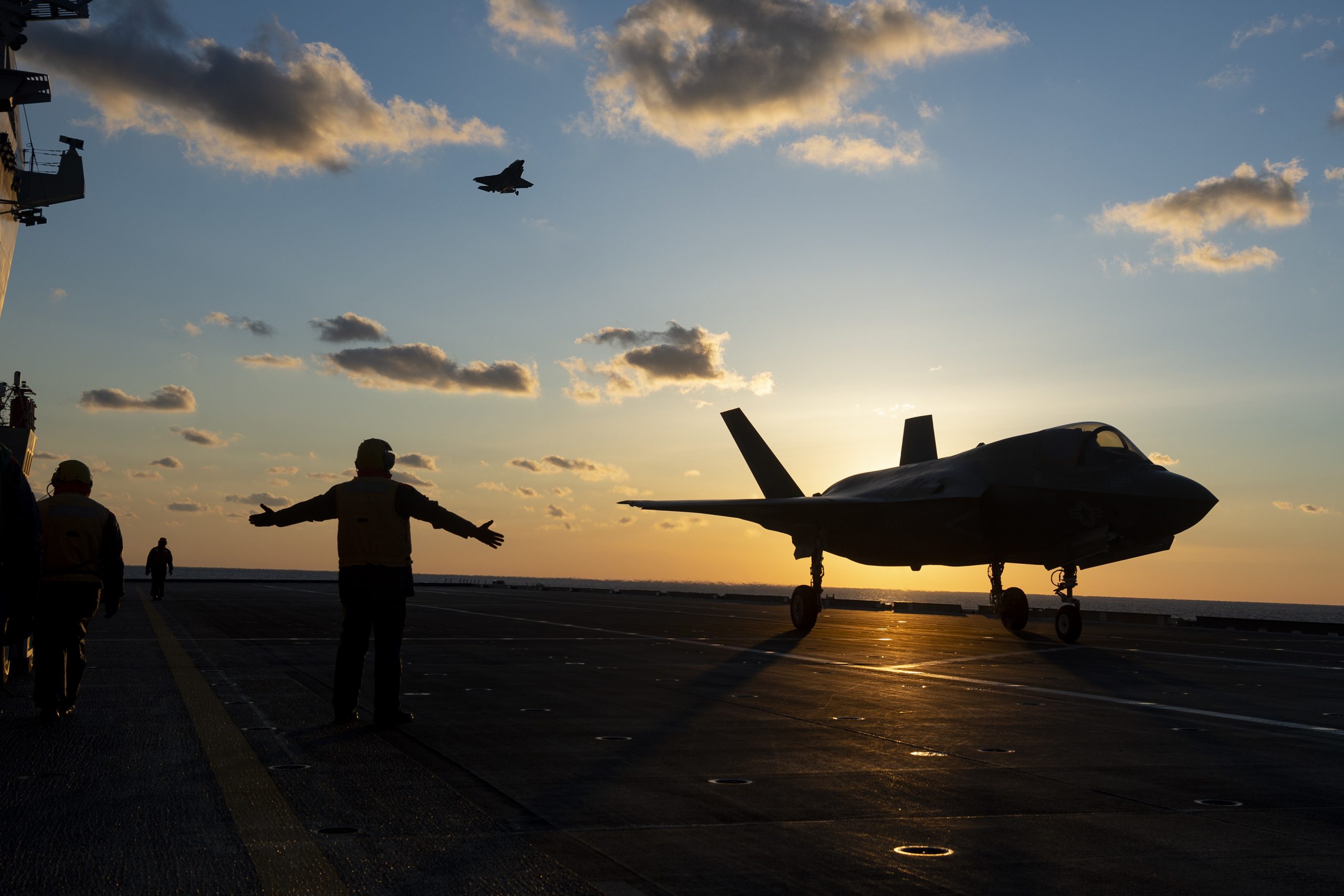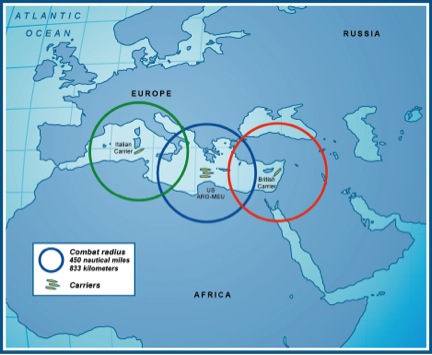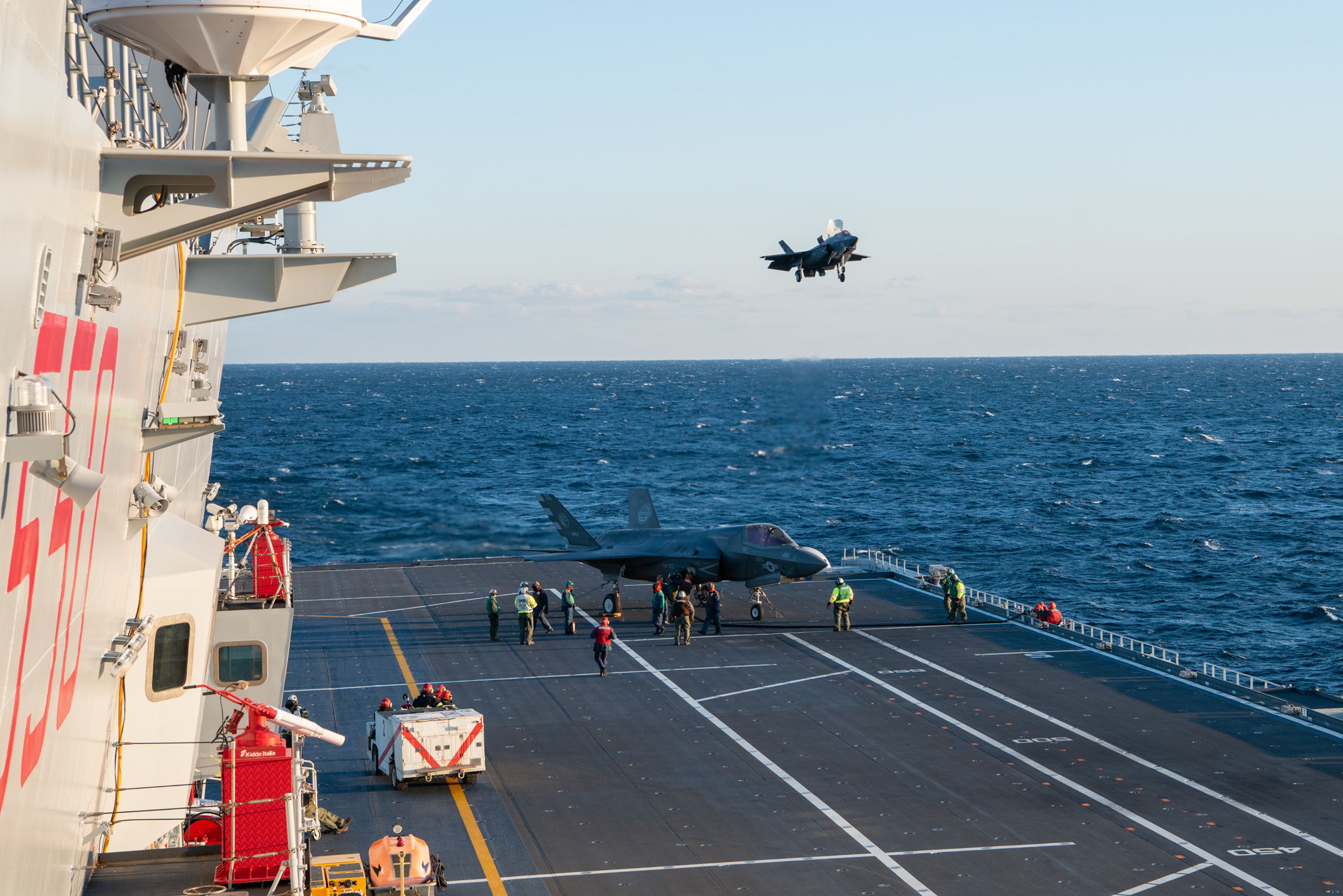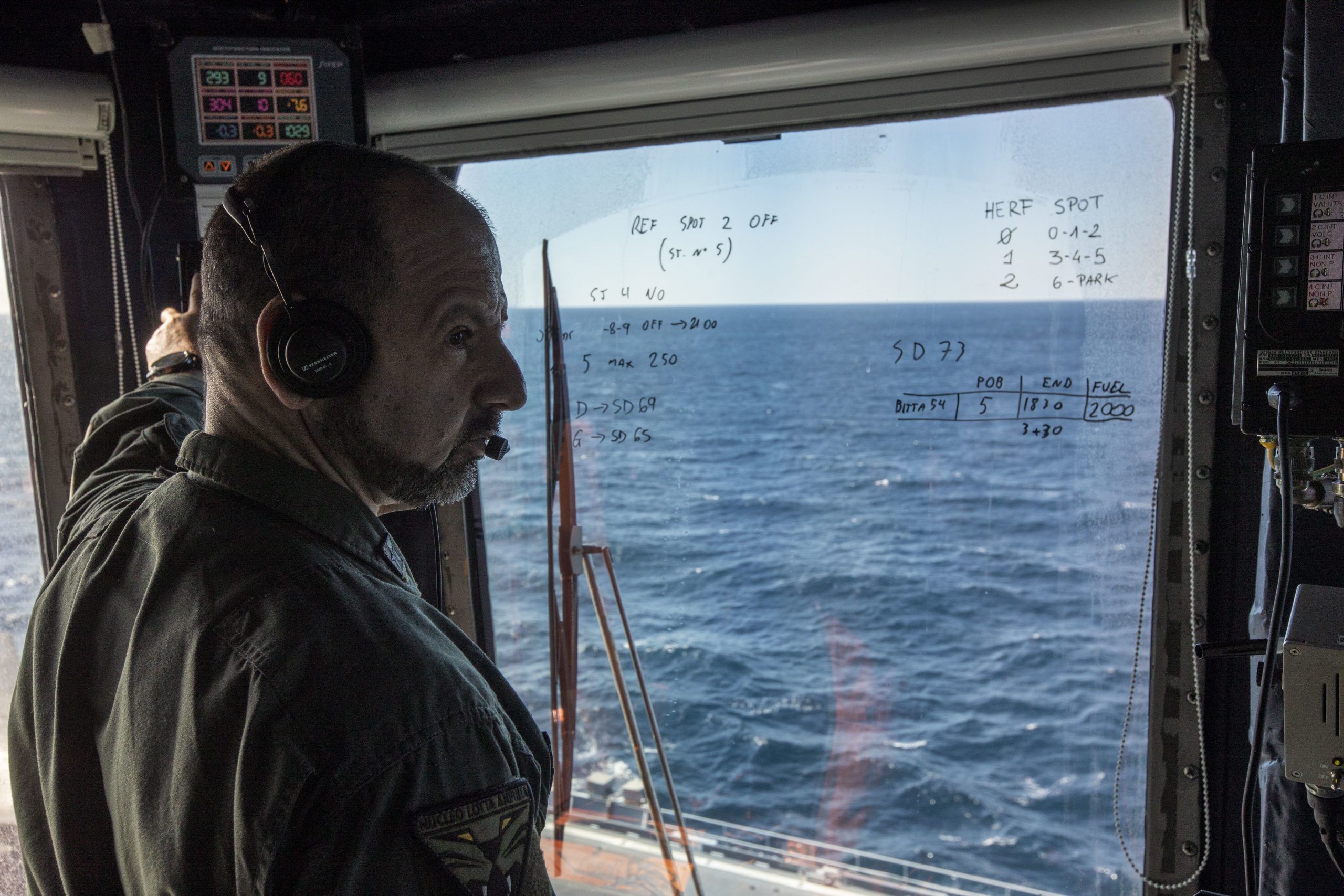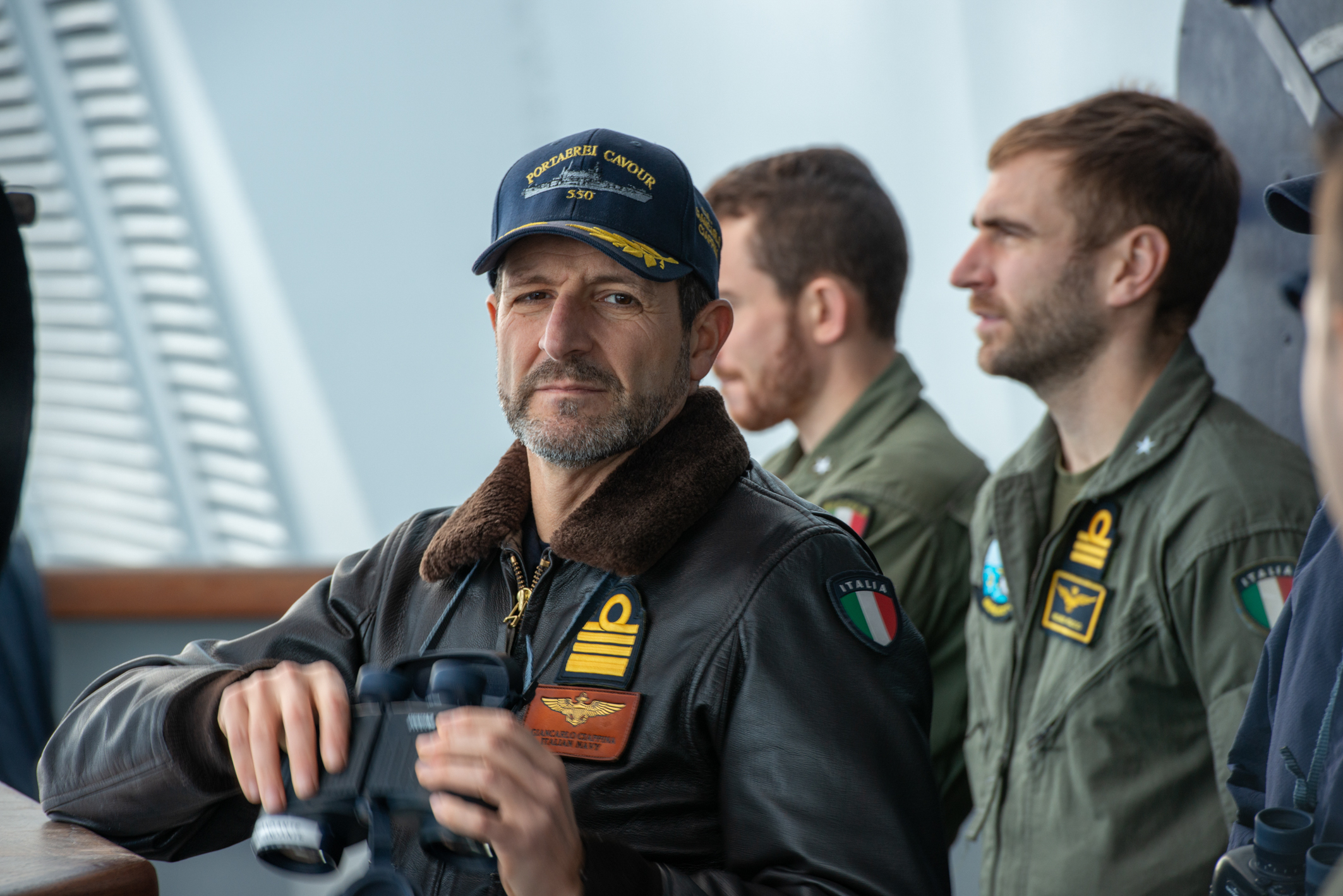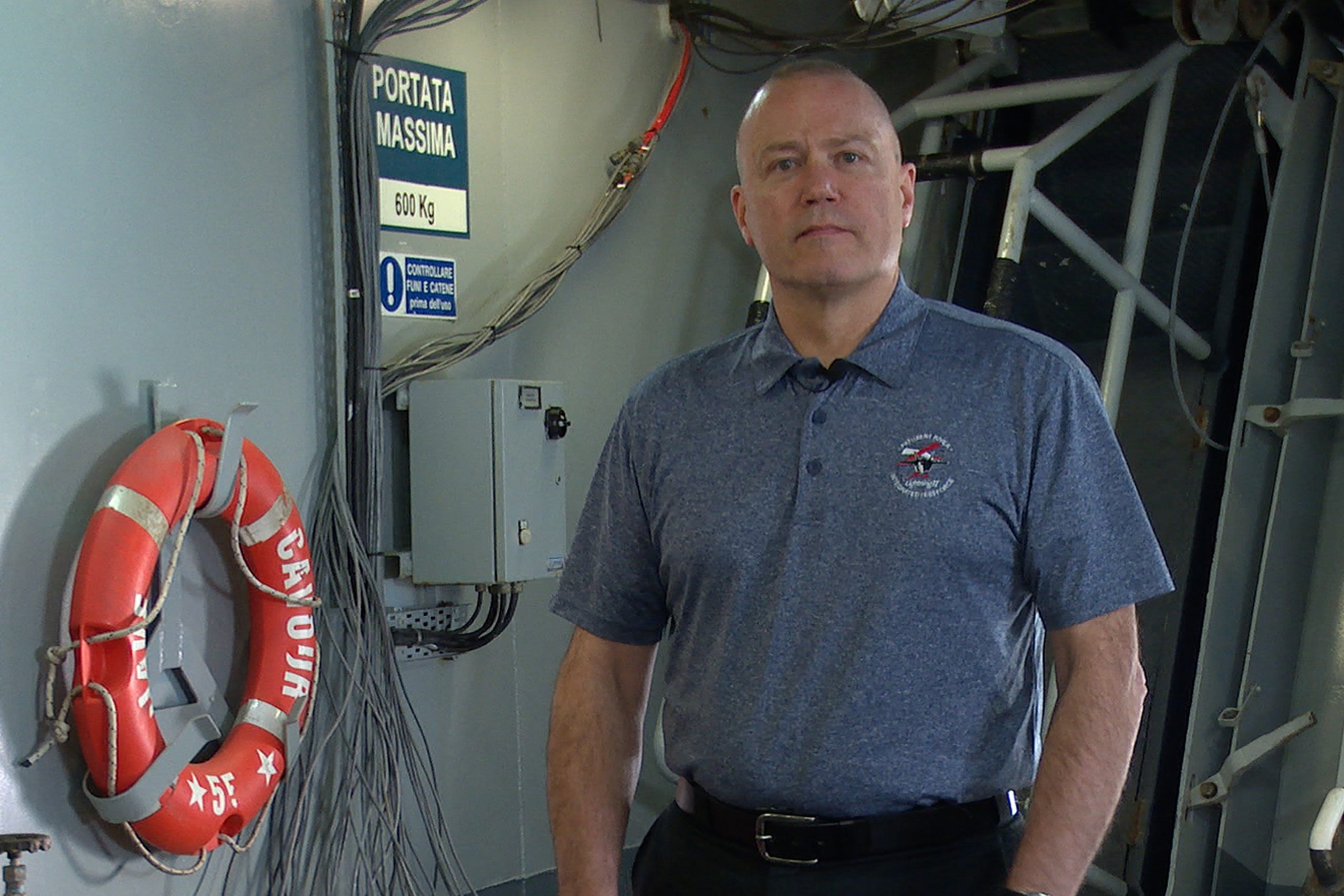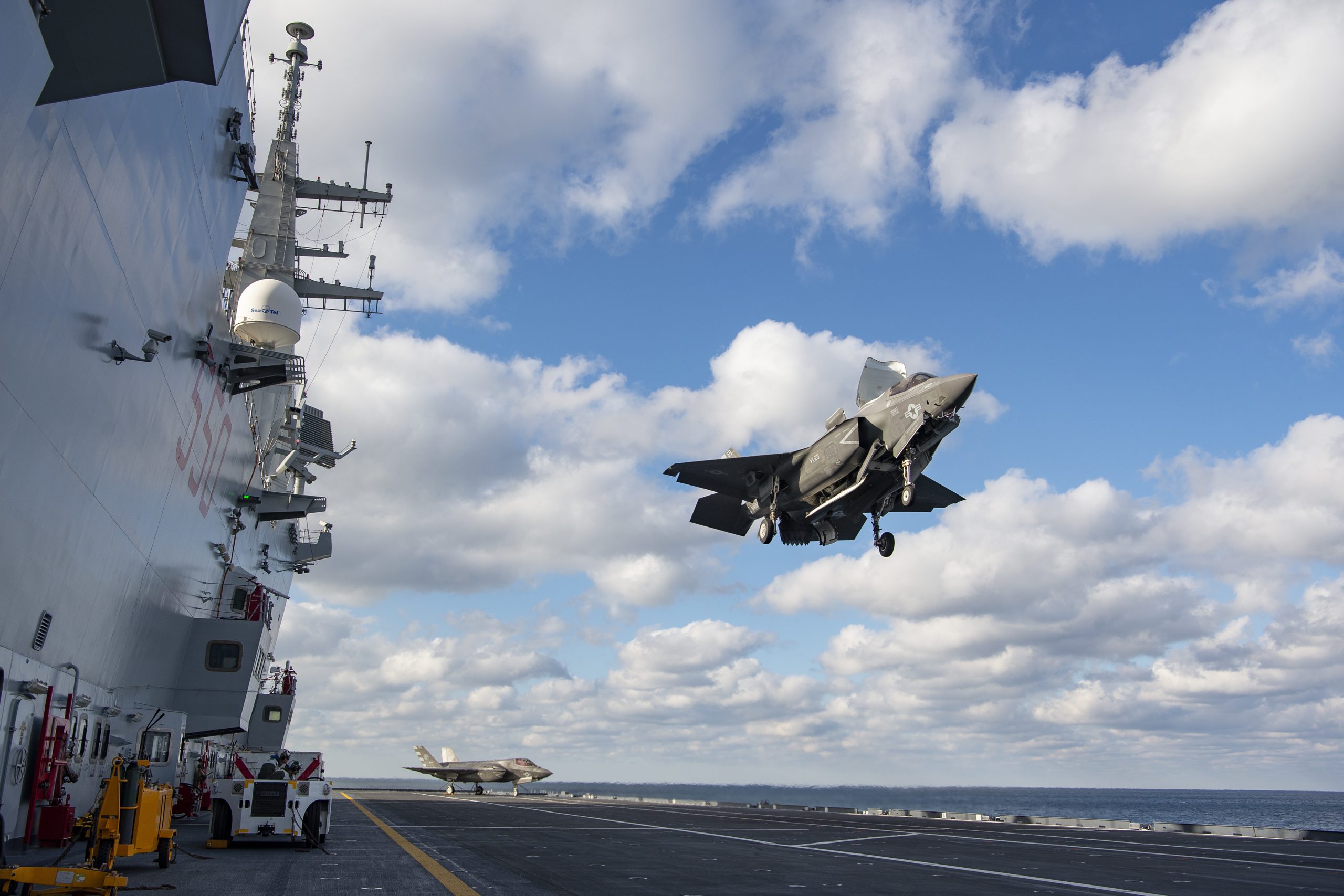We wrote some years ago about the coming of the F-35 to the Italian air enabled small deck carrier.
One of those articles focused on the importance of the Italian pilots and maintainers working with the USMC in preparing the way ahead.
In that article published on February 18, 2016, we highlighted the following:
We have discussed the evolution of Italian Airpower with senior Italian Air Force leaders.
And the Italian reshaping of their airpower capabilities with the modernization of the Eurofighter and the building, deploying and integration of the F-35, both the the As and the Bs, is a key part of the way ahead for Italy and its role in coalition operations through the Mediterranean and beyond.
The standing up of the Cameri facility in only four years, and building the first two F-35s outside of the United States is a major achievement.
And with the first F-35 transatlantic flight recently conducted by Ninja, the all-Italian air package — one F-35, two Eurofighters and two KC-767 tankers — crossed the Atlantic from the Azores in 7 hours against stiff headwinds.
The pilot had only 50 hours on the F-35 prior to the flight and the plane only 15 flight hours.
Even though Italy is clearly working airpower transformation, and the Italian Navy is on track to buy F-35Bs to replace their harriers for the Cavour, we have heard very little from them about how the evolution of Airpower intersects with naval modernization.
In a recently piece written by Commander Mauizio Modesto of the Italian Navy and published in the JPACC Journal, a perspective is provided with regard to “Italian Naval Air Power: New Challenges and Capabilities.”
At the end of the article we learn that:
A further major challenge ahead for Italian Naval Air Power is the renewal of embarked fixed wing aircraft with the gradual replacement of AV88 Plus with the STOVL version of the F-35B.
The F-35B is a revolutionary aircraft wit extraordinary operational capabilities supported by a logistics system with global reach that will allow the Italian Navy to make a leap into 5th generation combat aircraft.
The article provides a look at the evolving strategic situation within which the Italian Navy is operating and the need to extend its reach and to ensure the flexibility of operational capabilities to operate throughout the spectrum of warfare in a fluid and dynamically changing situation in the Mediterranean.
The F-35 is a key element for providing the kind of ISR and C2 which a dispersed fleet will need while operating across the Mediterranean and in the Atlantic.
But what is not clear is whether the Italian Navy really grasps this fundamental point about the capability.
And the F-35Bs which can fly organically off of the Cavour can link directly and instantly with the Italian Air Force F-35s flying from land bases or those of the coalition.
As a senior RAF pilot put it with regard to the shift from Harrier to F-35B which will fly from the Queen Elizabeth: “Before I leave the flight deck I will see the battlespace from my cockpit through my connectivity with F-35s already flying in the objective area.”
Taking this concept back to the Italian Navy and its consideration looking forward, getting to Beaufort Air Station and working with the RAF and the USMC might make a great deal of sense to build the F-35B and its operations into the ground floor of shaping the Italian Navy’s way ahead.
Unfortunately, the current approach seems to be dealing with the F-35B was silver bullet or high-end asset which will be added like a cherry on the cake.
What the Marines and the RAF have emphasized is that it is not that at all — but a building block for shaping the future evolution for the operation of the sea services in a hybrid strategic environment.
The Italian Air Force is building its coalition capability from the ground up at Luke AFB.
As Ninja, the first F-35 pilot to cross the Atlantic put it:
“We are learning together from the ground up. We are learning the same Tactics, Training and Procedures (TTPs) from the ground up. This builds in coalition possibilities which we can shape going forward.”
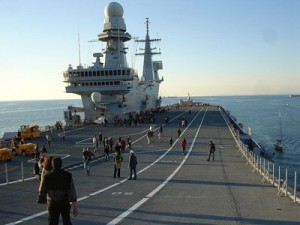
The Italian Navy has a similar opportunity at Beaufort Marine Corps Air Station.
And doing so now is crucial so that the approach and capabilities of the aircraft are seamlessly integrated into the transformation of the Italian Navy and not added as an afterthought.
It is about fifth generation enablement; not 5th generation layered on top of a legacy approach, fleet and concept of operations.
As we wrote earlier:
By having very flexible air assets operate across the Gator Navy, and the Osprey is the current driving force for change, the entire sea base operates differently.
Add the F-35 B as a “flying combat system” and the capabilities are not only enhanced by the role of each individual key ship, which can operate F-35Bs, will become key elements for the distributed force.
For the first time, amphibious ships and carriers the size of the Cavour will carry their own airborne C5ISR capabilities.
This means that the smaller ships will not only carry more organic punch, but be able to provide overwatch and strike support to a distributed fleet.
The intersection of land based and seabased assets can conjoined in coordinated operations as the F-35 fleet becomes a reality operating in the Mediterranean as well.
A ship like the Cavour, operating F-35Bs, can form a centerpiece of a maritime operational force or provide overwatch and strike support for an allied coalition force, seen as a distributed force.
Given Italy’s key location in the Mediterranean, its land and sea based assets can be blended into a more coherent capability to protect Italian interests by more effectively combining its air assets around the F-35.
For example, if one looks at the Mediterranean and considers simply the deployment of three F-35B carriers, the Cavour, the new Queen Elizabeth class or the USS America class, the Mediterranean can be considered under the reach of the air fleet but one clearly considered not as an end in itself but as integral part of joint and coalition operations.
That was in 2016; it is now five years later and now the ITS Cavour is working F-35 integration off of the U.S. East Coast.
According to a March 11, 2021 article released by the F-35 Joint Program Office Public Affairs, there is indeed significant progress being made.
WESTERN ATLANTIC OCEAN (March 11, 2021) — As the second week of F-35B sea trials aboard the Italian aircraft carrier ITS Cavour (CVH 550) begins, talk of the test plan has turned to discussion of specific test points tallied, moving the Italian Navy one nautical mile closer to certification to operate the fifth generation fighter aboard its flagship.
Cavour set sail from Norfolk Naval Station, Virginia, Feb. 28, and specially instrumented developmental flight test jets from Air Test and Evaluation Squadron (VX) 23 performed vertical landings for the first time March 1.
Since then, the embarked test team from F-35 Patuxent River Integrated Test Force (Pax River ITF) has partnered with the ship’s crew, working in some cases shoulder-to-socially-distant-shoulder to achieve test objectives.
“The first full week at sea has yielded great progress in our planned testing, and we are well on our way to capture all necessary data to permit the development of a highly useful and flexible operating bulletin for F-35 operations aboard ITS Cavour that will serve the Italian Navy well for decades to come,” said Andrew Maack, F-35 Pax River ITF chief test engineer and site director. “The leadership of ITS Cavour recognizes that our unique and sometimes unconventional flight operations are necessary to make our sea trials objectives successful and they are pulling out all the stops to provide flexible and aggressively helpful cooperation in all ship departments at all levels in the organization. The partnership could not be stronger.”
The flight deck is visible evidence of the growing working relationships.
“Watching the teamwork that Italians and Americans are doing on the deck is truly rewarding and honorable. I am proud of the excellent results achieved in just one week of work,” said ITS Cavour commanding officer Italian Navy Capt. Giancarlo Ciappina. “The cooperation between the American ITF and the Cavour ship crew represents, today, the emblem of the historic link between Italy and the USA. We feel proud protagonists of these “pages of history” for the Italian Navy and we are grateful to the American staff who is working closely with us for this achievement.”
The ship’s rhythmic rise and fall—the horizon visible one moment, gone the next—and the sometimes “angry” sea with its white caps, are the backdrop for Cavour’s ponte di volo, or flight deck. On this ‘tela’, or canvas, per se, is a rainbow of life preserver vests, inside of each is a key partner in successful air operations.
“Watching the teamwork on the deck is exciting. There is an exchange of knowledge between the professionals and we are working to the best of our abilities and skills for the success of the Ready for Operations campaign of the aircraft carrier Cavour, milestone of the Italian Navy,” said Italian Navy Cmdr. Mario Massacci.
The F-35 Pax River ITF and ITS Cavour are conducting sea trials as part of Italian Navy’s “Ready for Operations” campaign that will bring the fifth generation fighter aircraft to the navy’s flagship.
And to be blunt about it: what is the difference between 4 Harriers coming off of the deck of the ITS Cavour and a 4-ship integrated F-35 wolfpack?
A core capability which can integrate into an allied kill web is the simple answer.
A more complex answer is suggested by the graphic below:
In the graphic below, a notional intersection of F-35Bs operating off of an Italian carrier with that of the UK with that of the USN-USMC Amphibious Ready Group in the Mediterranean is represented:
The fleet operates by the machines within the plane trading data with one another so that the circles represent a common operating picture over the reach of the multiple flying assets. The COP provides a setting within which the pilots can operate to shape situational decision making appropriate to the mission.
And the circles are actually 360 degree situational awareness enabled operating areas. The reach throughout the Mediterranean simply from three ships operating their F-35Bs and delivering situational awareness, strike and situational decision-making is significant even without considering the other assets with which the fleet will interconnect with.


